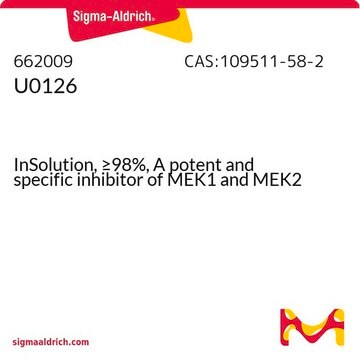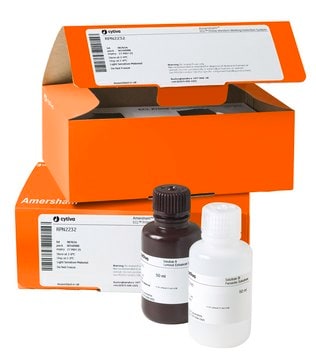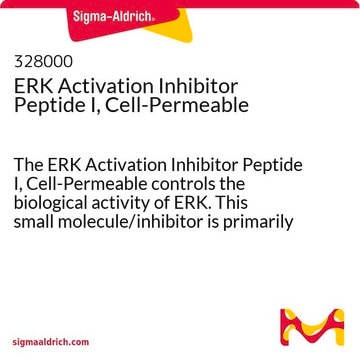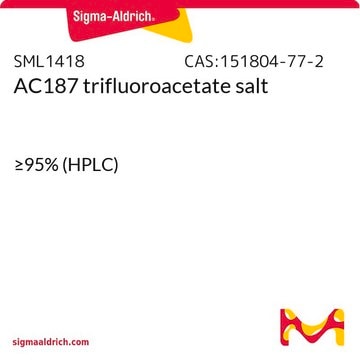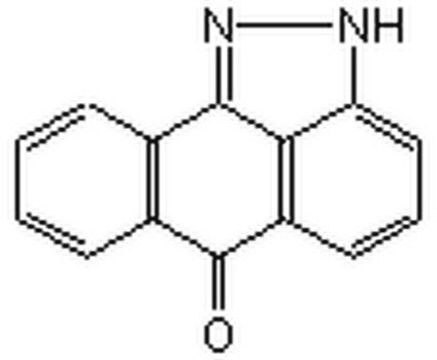U120
U0126 ethanolate
≥98% (HPLC), powder
Synonym(s):
1,4-Diamino-2,3-dicyano-1,4-bis(o-aminophenylmercapto)butadiene ethanolate
About This Item
Recommended Products
Quality Level
Assay
≥98% (HPLC)
form
powder
storage condition
protect from light
color
white to off-white
solubility
DMSO: >10 mg/mL (Stock solutions in DMSO should be used within a month. Acidic solutions exhibit weaker inhibition)
storage temp.
2-8°C
SMILES string
N#CC(C(C#N)=C(N)SC1=C(N)C=CC=C1)=C(N)SC2=C(N)C=CC=C2.CCO
InChI
1S/C18H16N6S2.C2H6O/c19-9-11(17(23)25-15-7-3-1-5-13(15)21)12(10-20)18(24)26-16-8-4-2-6-14(16)22;1-2-3/h1-8H,21-24H2;3H,2H2,1H3
InChI key
CFQULUVMLGZVAF-UHFFFAOYSA-N
Gene Information
human ... MAP2K1(5604) , MAP2K2(5605)
Application
Biochem/physiol Actions
Features and Benefits
Caution
Preparation Note
Storage Class Code
11 - Combustible Solids
WGK
WGK 3
Flash Point(F)
Not applicable
Flash Point(C)
Not applicable
Personal Protective Equipment
Certificates of Analysis (COA)
Search for Certificates of Analysis (COA) by entering the products Lot/Batch Number. Lot and Batch Numbers can be found on a product’s label following the words ‘Lot’ or ‘Batch’.
Already Own This Product?
Find documentation for the products that you have recently purchased in the Document Library.
Customers Also Viewed
Articles
Discover Bioactive Small Molecules for Kinase Phosphatase Biology
Discover Bioactive Small Molecules for Kinase Phosphatase Biology
Discover Bioactive Small Molecules for Kinase Phosphatase Biology
Discover Bioactive Small Molecules for Kinase Phosphatase Biology
Our team of scientists has experience in all areas of research including Life Science, Material Science, Chemical Synthesis, Chromatography, Analytical and many others.
Contact Technical Service

